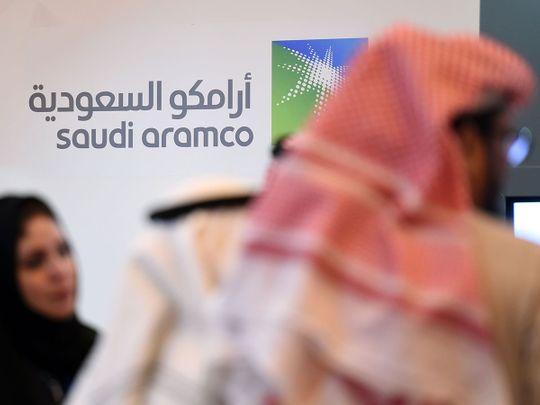
Riyadh (Bloomberg): Saudi Aramco sought to underpin the targeted $2 trillion valuation for its initial public offering by increasing dividends, paying less tax and finding cornerstone investments from major Asian oil producers.
The moves, which came as the state-run company said it had restored all output halted by attacks on its main crude-processing facility last month, show preparations are accelerating for the listing, with the aim of offering shares on the Saudi bourse as soon as November.
The IPO is the centrepiece of Crown Prince Mohammed Bin Salman’s plans to revamp the Saudi economy and release billions in capital for the kingdom’s sovereign wealth fund. The efforts to make Aramco a more appealing investment and guarantee demand for shares come amid scepticism that the prince’s valuation is attainable.
Should the kingdom meet that target, the proposed payout of $75 billion next year would still leave dividend yields below those already offered by competitors like Exxon Mobil Corp. and Royal Dutch Shell Plc. While Aramco is the world’s most profitable company and produces about 10% of the world’s oil, it also carries greater risks, as illustrated by the drone and missile strike on key facilities in September.
Growing dividends
The 2020 payment is part of plan for a growing, progressive dividend to investors, according to a corporate presentation posted on the company’s website on Monday.
Dividends of $75 billion would give investors a yield of 3.75% if the company achieves its $2 trillion valuation. Although a decent payout in a low-interest rate world, it’s a lower dividend than other Big Oil firms: investors in Shell receive 6.22%, while Exxon pays out 4.9%, according to data compiled by Bloomberg.
Equity investors will also receive only slightly higher returns than bond investors — the yield on the company’s 2029 bond is about 3%.
Aramco could boost the dividend still further with one-time rewards to shareholders. It paid out a $20 billion special dividend in the first half of the year on the back of an “exceptionally strong financial performance” in 2018, the company said in August, though that payment caused its cash pile to drop markedly.
In a bid to reassure potential investors, the company also said that if the total dividend falls below $75 billion between 2020 and 2024 it will prioritise payouts to non-government shareholders.
Cornerstone investors
Aramco has approached Asian state oil producers, including Malaysia’s Petroliam Nasional Bhd., Sinopec Group and China National Petroleum Corp. about potential cornerstone investments in the IPO, people with knowledge of the matter said. The Gulf energy giant and its advisers have also reached out to China’s sovereign wealth fund and state-owned entities from the UAE and Kuwait, including Abu Dhabi sovereign fund Mubadala Investment Co., as well as Canadian pension funds, the people said, asking not to be identified because the talks are private.
Deliberations are at a preliminary stage, and Aramco hasn’t yet received any firm commitments, the people said. Aramco’s advisers are arranging meetings with some potential investors this week and next week, according to the people. The funds could decide against buying into the offering, they said.
Aramco is leaning on business partners and friendly governments to help achieve its preferred valuation even after oil prices fell more than 25 per cent over the past year. It’s casting a wide net to attract enough demand as it accelerates preparations for the listing in Riyadh. An original plan to list the company on an international exchange at the same time was dropped last year after international investors balked at the valuation.
Tax changes
The third plank of Aramco’s pitch to investors was a changed schedule for royalty tax on oil production. Payments will be lower when oil is below $70 a barrel, but higher above that level.
Under a new royalty structure effective from January, Aramco will pay 15 per cent for Brent prices up to $70 a barrel, 45 per cent for Brent prices between $70 a barrel and $100 a barrel, and 80 per cent on Brent prices above $100 a barrel. The current tax regime, introduced in January 2017, started at 20 per cent and peaked at 50 per cent.
The new royalty structure will be a significant boost at today’s oil prices — it’s equivalent to about $3 a barrel on each of the 9.9 million barrels the company produces daily.












